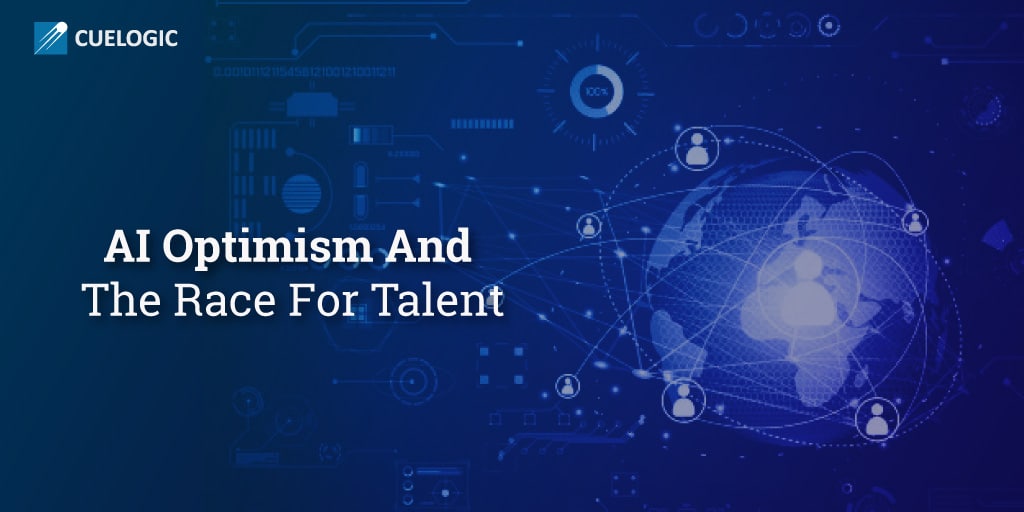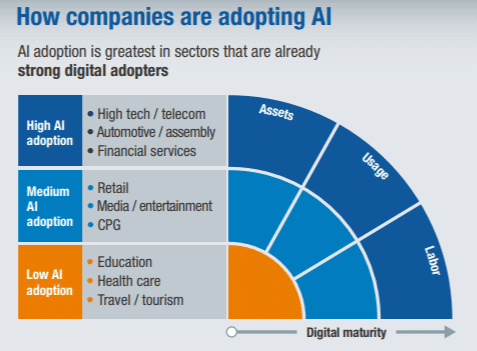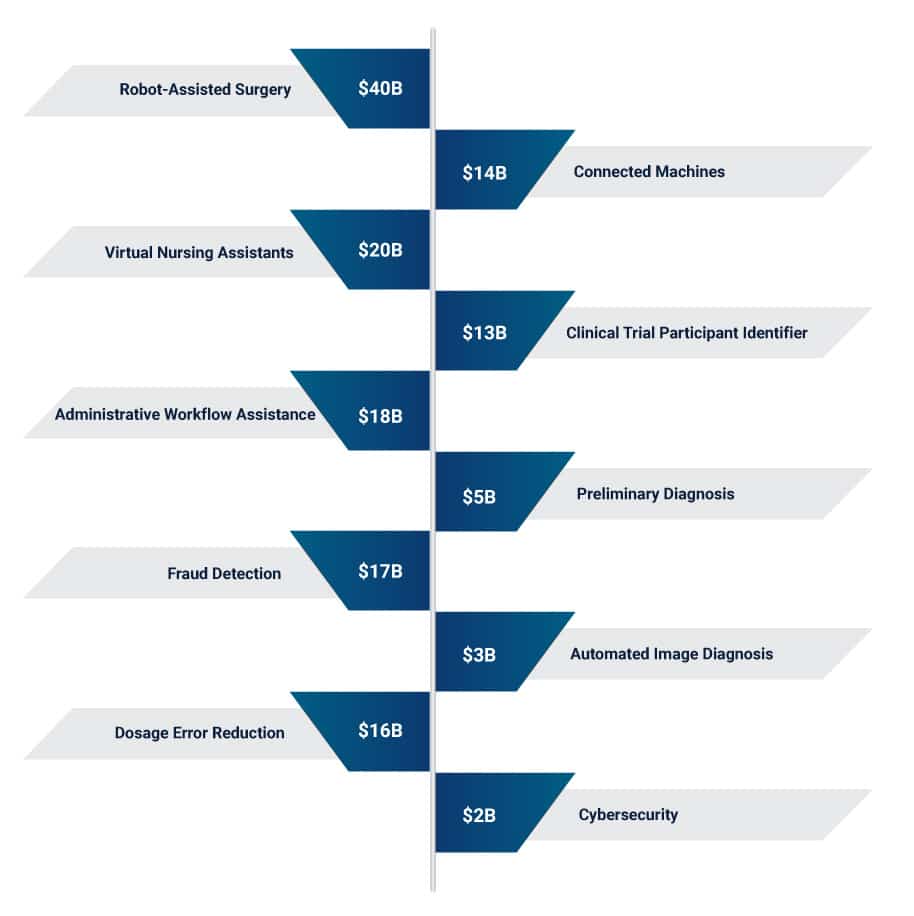The first mover argument is a well-known hypothesis in economic circles that stresses on the need for being the first to utilize a highly disruptive technology. Being the first user for any highly developed technology will be the determining factor that would separate the failed ventures from the successful ones.
The glittering allure of AI puts it in a position of being a frontier technology that will be used and exploited in even the most unexpected of places. AI has already entered the domains of engineering, finance, security, autonomous systems and is being hotly debated for replacing personal care professionals and educators. But is humanity truly prepared to jump on to the next big thing? Are there any special challenges and considerations to take up before making such a big leap?
As systems grew smaller, faster and more capable, computers found a home in every office, hospital, shopping mall, station, airport, mall, and supermarket. AI’s best use has been in creating predictive and preventive models to aid in the development of systems that can perform decision making. This is a sort of decision making that’s faster, efficient and overall timesaving. The evolution of AI and its use in the industry has been synonymous with the employers as well. No longer do we have programmers that build the primary mainframes of their companies as the machines took their spot. But AI has made its mark on the lower echelons as well. Marketing, sales, finance, and research all use methods like deep learning to help reduce the gaps between results and work. But healthcare has been another untapped region for AI.
As debut in healthcare services is expected to begin with the administrative sections as high-level deep learning algorithms will replace the need for menial tasks. Activities such as check-ins, appointments, reminders and more complicated funneled tasks such as supply chain management will be the first targets. It is anticipated that by simply investing in an AI-driven platform for hospital staffs, costs can be reduced by 27 to 29 percent. An AI powerful mainframe running in the background of any hospital can serve multiple lower level systems without any disturbances. It can even serve as an auxiliary unit to be used when staff members are scarce, or resources are limited. Big industry contenders like GE and Sanofi have already made a move by implementing central software frameworks that handle major administrative operations. Built on the backbone of SAP and HPI, these frameworks have radically changed the way patients look at healthcare and interact with staff members.
With the advent of IoT devices, wearable technology has become an important approach in integrating AI in the healthcare industry with a greater focus on real-time assessments of patients. Heart monitoring, blood pressure, cholesterol, insulin, and hormonal levels can be traced to the last decimal with handy gizmos. Doctors and physicians are now always a step ahead in watching over patients and can recommend prognostics on the go with zero disturbances. Not only has this improved survival rates for those willing to pay the extra buck but also brought down the costs to manage individual patients drastically to a great degree. This is the pictured positive side. On the other side of the coin, there are however multiple challenges.
The Disconnect Issue
It’s a widely contested fact that institutions have a lot to do for preparing the next generation of thinkers and doers to take up positions in the industry. If the acumen of the AI workforce falls flat on what is important and what is needed for any AI modeling, the bubble bursts and leaves a sordid sight behind. The race to find the best and brightest talent doesn’t just stop at the learning desks. It’s there, seething with energy at every hackathon, coding challenge, and startup accelerator.
But the major issue doesn’t just lie with the need to find the best but also figuring out what is best for the industry. In a computer-dependent atmosphere that was primarily dominated by complex compilers and languages, C and FORTRAN were the main tools used by the industry. As more and more students took up the time to master them, the industry shifted to new avenues with the birth of simpler syntaxes such as C++, JAVA, and BASIC. The actual shift occurred when computing technologies looked far beyond the creation of software for processing needs. Mathematical and analytical software made their debut with packages from STATA and SPSS. And then came the gradual decline of the costs to develop such systems leading to freeware like Python. What this illustrates is the bigger reason why there is such a huge disconnect between the industry’s needs for AI developers and the actual curriculum.
One keen observation here is that the industry has always shifted to newer alternatives at a much faster rate as time went on leading to the need to excel at multiple systems. It’s not enough to know about extensions like Power BI or MATLAB, and the industry demands greater skills. The issue arises with trying to catch up to what is relevant or useful. AI development is no stranger to this problem. While a great part of the workforce would have been tutored in developing AI through freeware, they deal with exclusive software systems like SAP in the real world.
This shouldn’t cast a negative image of the industry’s indecisiveness to know what should be used, but a fair warning to the new talents of the future as far as 79 percent of AI thinktanks claim that they look for skills such as independent thinking, multilanguage fluency and years of experience in the AI sector. The result of this mismatched and ambivalent direction of the tools that become popular leads to an all too common problem of workplace saturation.
However, it can be tackled. In the healthcare industry, this usually means narrowing down the search those with the right skills and experience. But in a sea of millions that resemble each other to many levels, where does a business draw the line of who’s better. And more importantly, what makes one talented candidate better over the other. Is it merely the knowledge of AI language and environment or something far more intrinsic?
Where Should Businesses Start?
Recent research findings point towards a rising level of optimism that AI is to have on the healthcare sector. To businesses, this usually translates to a good return on investment. While the typical image of a hospital prioritizing business needs over patient needs is a horrid future, it is the necessary evil with which new technology can find its way to save more people.
Look beyond the buzzwords and hype that surround AI and start from the grassroots. AI at its basic levels is a group of specialized tools that can wield limitless potentials in the right and capable hands. Define a business case that targets a real problem that affects people in the industry. Know your consumer and learn what makes them tick. Start asking yourself the question of what is the gap that the company should fill in the market that no other group can provide. Could it be a non-invasive way to measure hormone levels, a cost-effective drug delivery AI or even a ‘life saving’ financial calculator that compares the best insurance plans depending on a person’s debt levels. The possibilities are endless. After framing the business use case, learn the technologies and tools that would be required to bring such ideas to life.
Consult medical practitioners and experts, formulate a picture of the end goal in mind and look for ways to get there. Consider the challenges of integrating the AI framework into an existing hospital system. Would it save the system at any time or money? But more importantly, would it help save more lives? Teams may face multiple challenges in procuring the right data to be used for building such models, but with the right sample populations and repositories, teams can achieve the best results.
How To Get The Best Talent
Just because the pool grows larger, doesn’t mean it’s tough to find the biggest fish. This is where assembling the best minds pays off well in advance. It just takes a better search methodology with the right prerequisites to get the best that money can buy. But always remember, talent hits a target no one else can hit; genius hits a target no one else can see.
Getting the best talent first begins by framing what the objectives of the company are and what kind of people align to its goal the best. Investing in the right people is as important as investing in the right tools and resources. Firstly, acknowledge the fact that AI is something that can be used in any rung of the ladder if used right. Separate the various departments that could benefit from AI and then work on the right roles that fall under those departments. The right data-science talent and skill sets should be incorporated in the solution as well.
Healthcare sectors can be divided to be financial, clinical, logistical and administrative. Regardless of the end objective that could differ from company to company, certain job roles will always be required to run the show. Building your AI Team first starts with the Translators. These professionals help in connecting and crafting a contextual strategy to the technology so that ideas on paper can be materialized. Their roles are realized early on and should be the first point of contact for interacting with healthcare professionals and hospital staff.
Next, come to the data scientists and data analysts who are responsible for carrying out the wet works of the AI methodology. Teams looking to hire such professionals should consider the candidate’s ability to design frameworks independently. They should have a thorough knowledge of at least three languages with extensive experience in deployment and model validation.
And finally, we have the solution architects. These professionals function essentially like project managers and can differ depending on the nature of the business-functional, matrix or projected. They are responsible for overseeing the project roadmaps and defining where the models are justified or feasible enough to be deployed. They are also responsible for devising the usability of the models and testing out where they can be used in a given setting.
Other professionals that are to be included can be IT professionals, coders, deployment and debugging engineers as well as STACK experts. Web designers and IoT experts with a working knowledge of sensors and actuators would become a part of the team at some point. The thought process in hiring any of such members should be simple-pick those that align best with the goals of the business. Pick those that can turn data to verifiable results not just with good accuracies but with good evaluations.
Conclusion: The Roadblocks
Experts would agree that talent and not technology is the main roadblock that is plaguing the industry now. And this roadblock comes in various forms in different countries depending on the institutions available and the presence of companies that dabble in AI. Despite the gradual shift that graduates and professionals are making towards adding more AI related experiences to their resume, the industry is still at a loss for the right professionals. These disconnects, as discussed, will only grow more substantial with time. The demand for the hour is thus to highlight the importance of certain standardized certifications and credentials that would help filter out the best talent.
At a glance, AI in healthcare should focus on first defining the best factors that make a good programmer or analyst. The rapid shift of the industry from one standard software environment to the next should be compensated with a basic number of important tools. And finally, the industry should play a leading role in preparing like-minded talent to learn and develop for them with interconnected programs.
Similar to the yesteryear industries with separate societies and groups, the creation of a global standard for AI systems would be a much-needed blessing for finishing the race for talent.
Must Reads:[wcp-carousel id=”10004″]


